Embarking on the creative journey of pigeon drawing invites you to explore the beauty and simplicity of one of the most common yet often overlooked city birds. Pigeons, with their sleek bodies, rounded heads, and distinctive cooing, can add a touch of urban nature or peaceful symbolism to your artwork. This guide will navigate through the process of drawing a pigeon, incorporating key phrases to ensure your artwork captures the essence of this adaptable bird.
Table of Contents
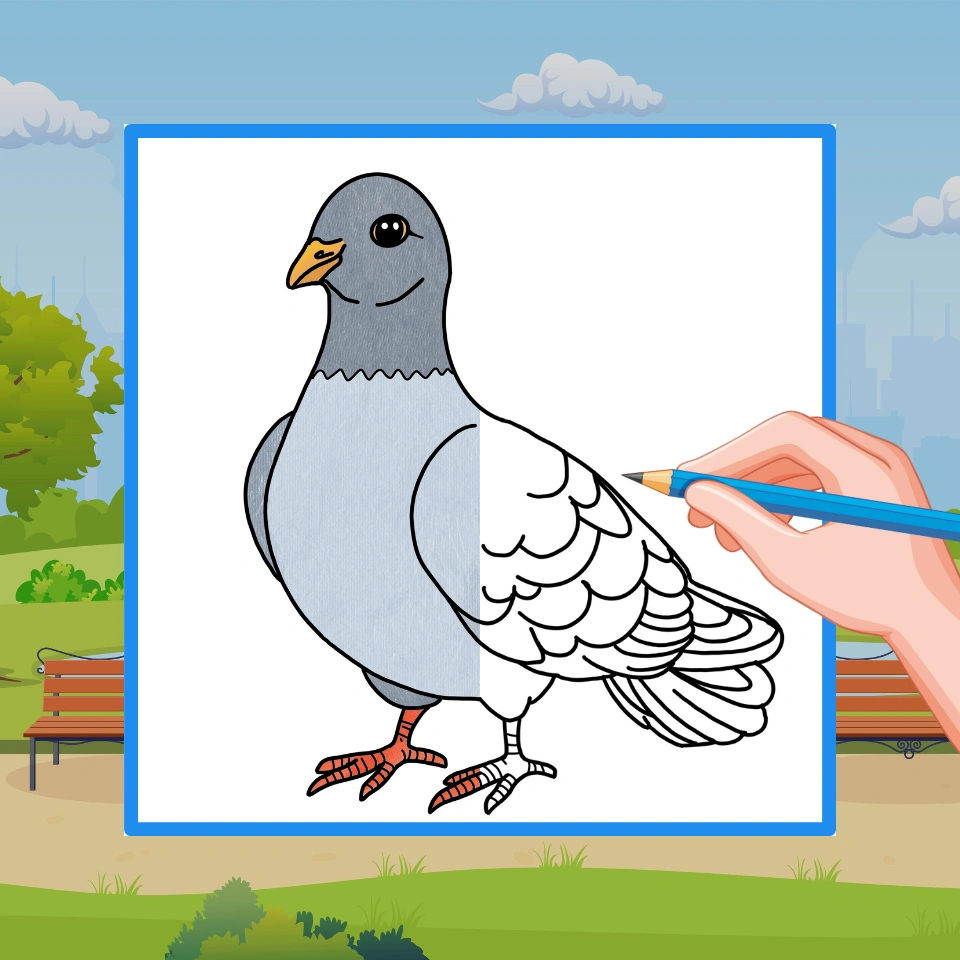
Understanding Pigeons
Before you dive into drawing, taking a moment to observe pigeons can be invaluable. Noted for their varied colors, from grey and white to more vibrant hues, and their characteristic bobbing walk, pigeons offer a wide range of inspiration. Understanding their body proportions and typical postures, such as perching or in flight, can significantly enhance your drawing’s accuracy.
Step-by-Step Guide to Drawing a Pigeon
Step 1: Outline the Basic Shapes
Start with Simple Forms: Sketch a small circle for the head and a larger, elongated oval for the body. This basic framework will help you capture the pigeon’s overall structure. Or you can draw the outline in a single line, like in the picture.
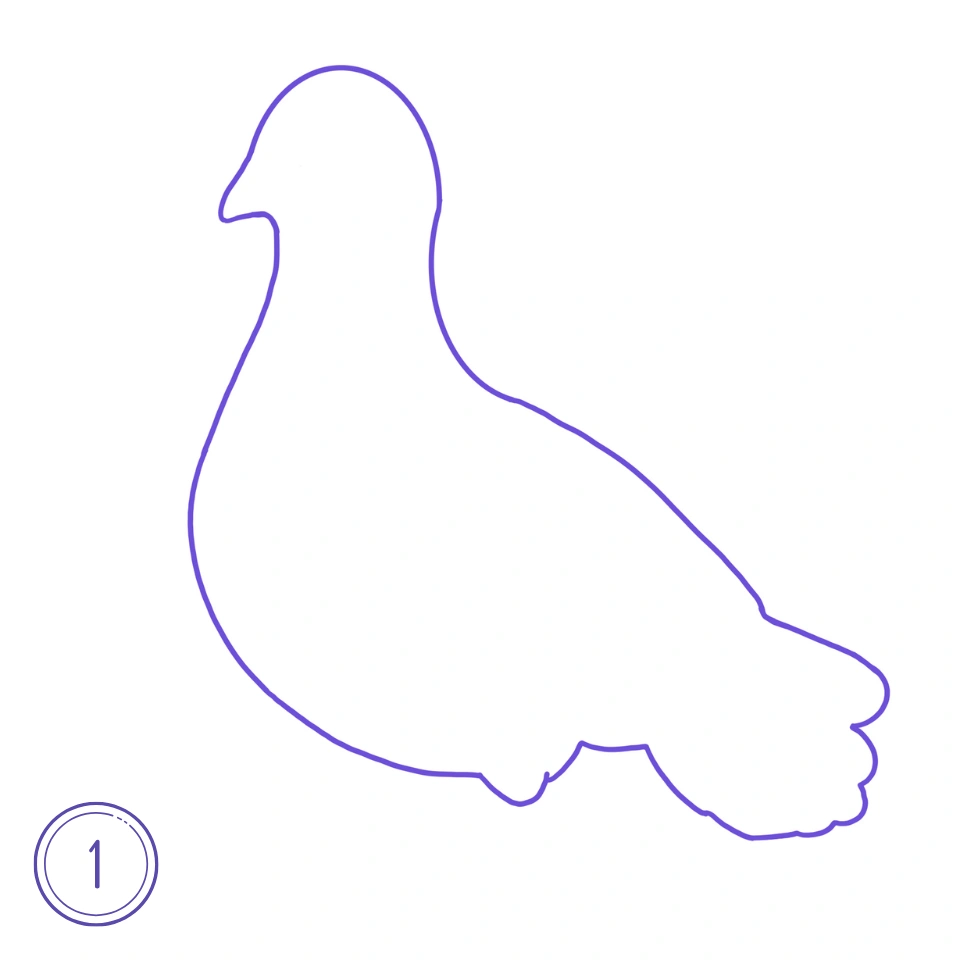
Step 2: Add the Head Details
Focus on the Eyes and Beak: Draw a small, round eye near the top of the head circle. Pigeons have short, thin beaks, so add this feature with a slight curve downward at the tip.
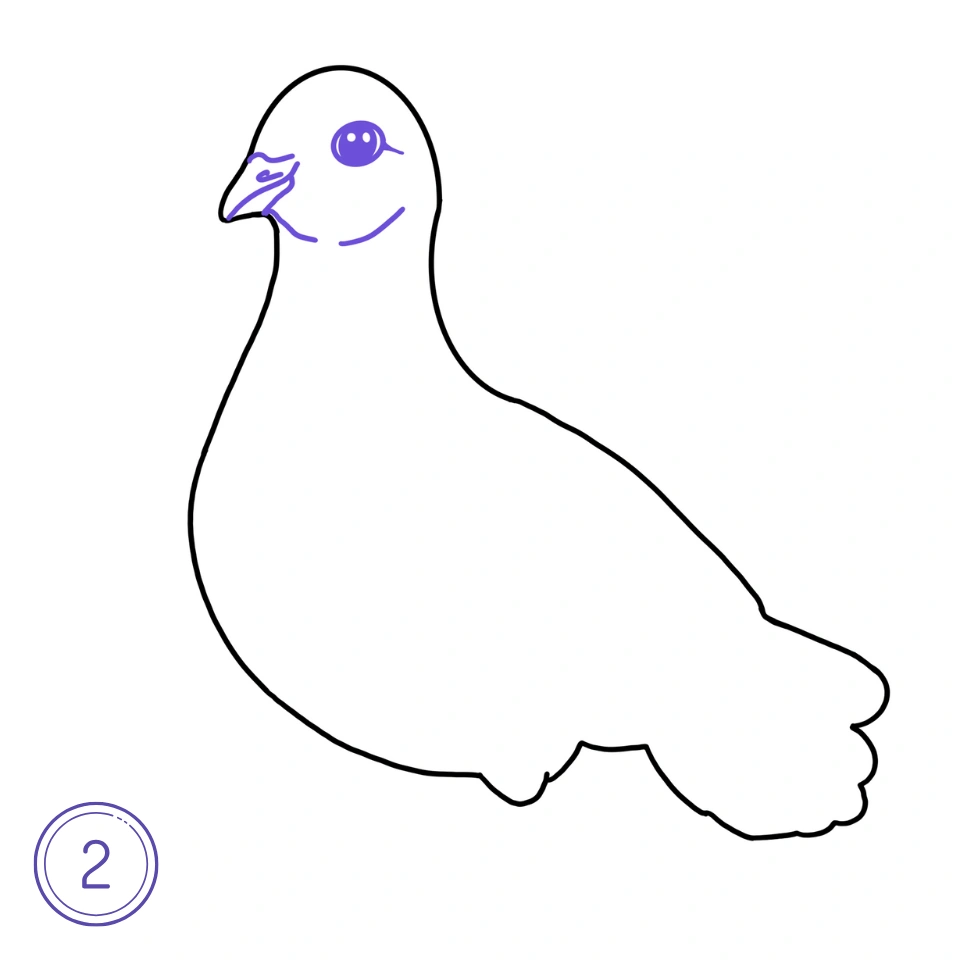
Step 3-4: Illustrate the Body
Sketch the Wings and Tail: Outline the wings, noting that they are typically tucked at the sides but can be drawn slightly open to suggest movement. The tail should be short and straight, adding to the bird’s streamlined look.
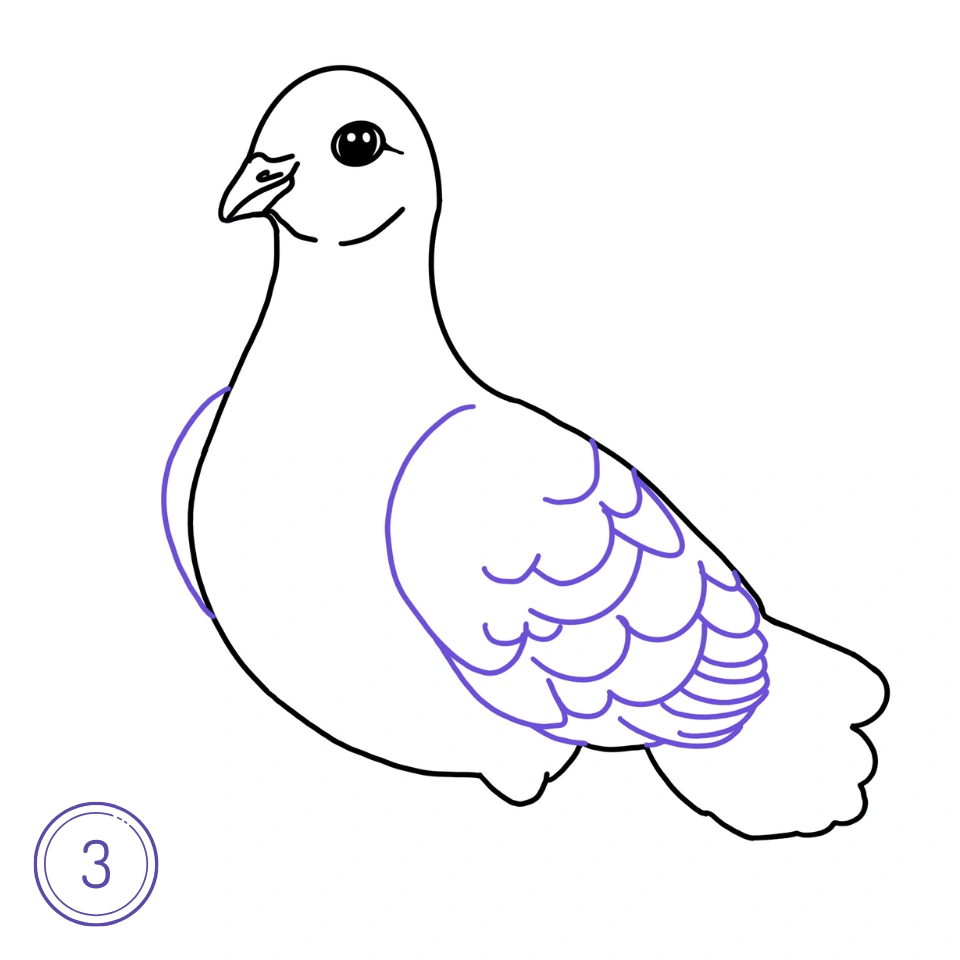
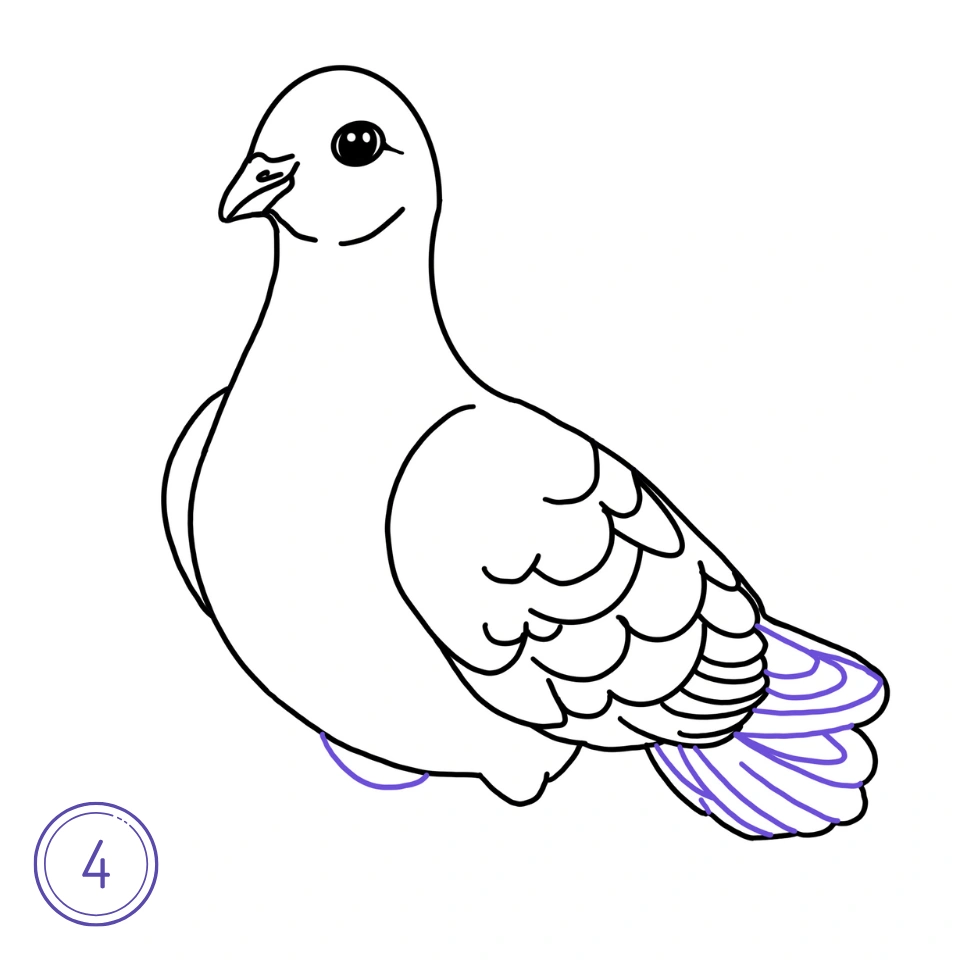
Step 5: Draw the Pigeon Feet
Start by drawing the pigeon’s feet with three forward-facing toes and one pointing backward. Make the toes slightly curved with small claws at the tips to give them a natural look. Add some details like scaly texture or slight bends in the toes to make the feet appear more realistic.
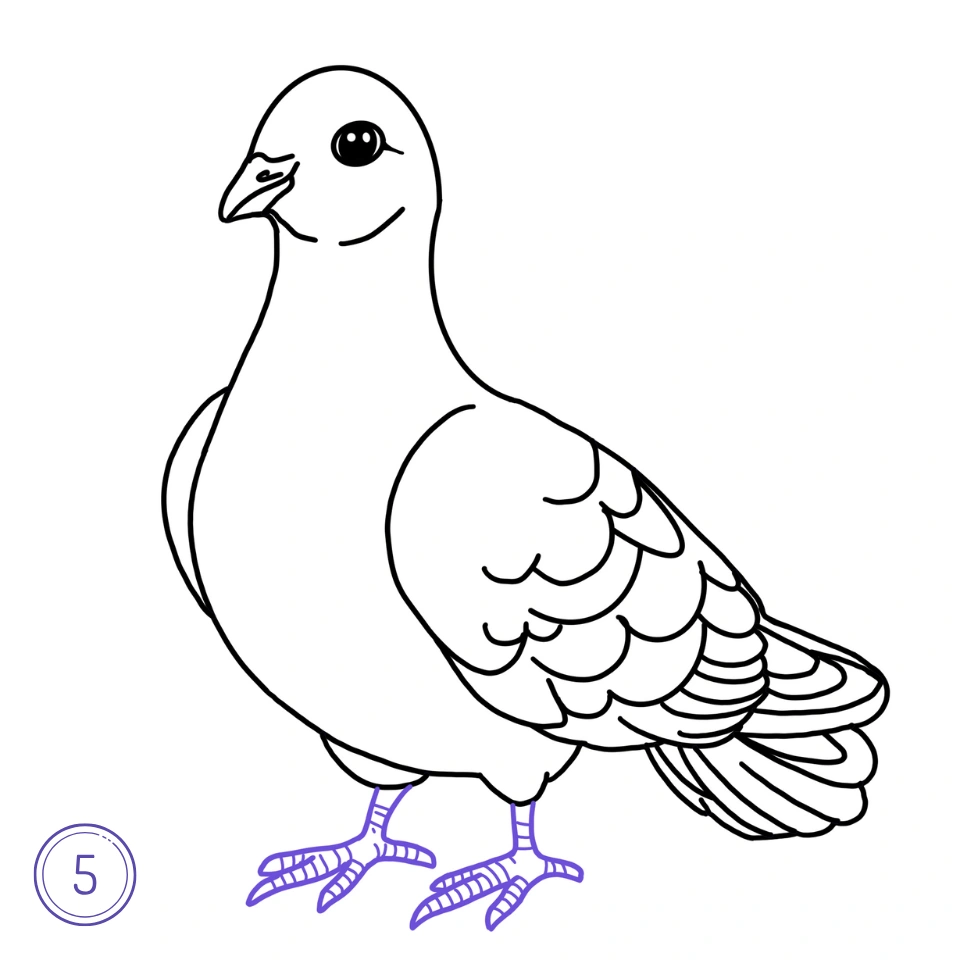
Step 6: Final Touches
Shading and Coloring: Apply light shading to give your pigeon drawing depth and volume, focusing on the underbelly and where the wings meet the body. If you’re adding color, pigeons range from greys and blues to browns, allowing for some creativity in your palette.
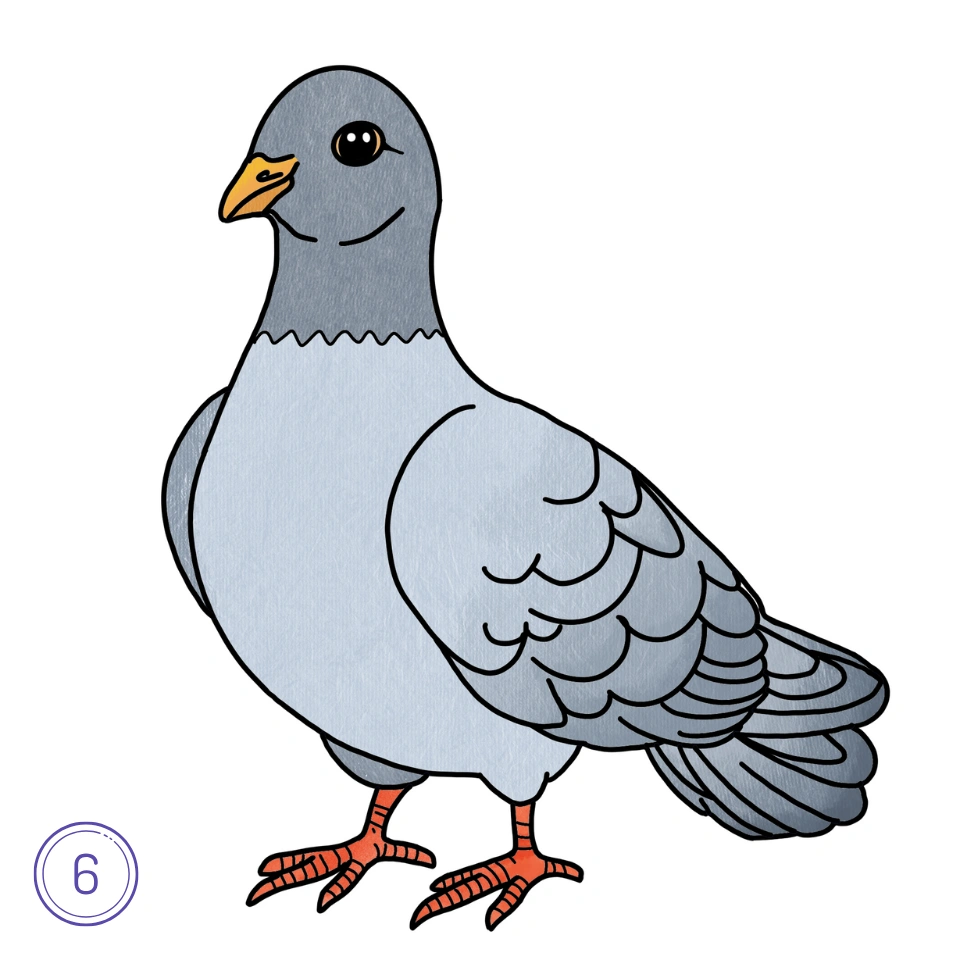
Step 7: Add Background
Sketch a background to place your pigeon in a natural or urban setting. You can draw a park with trees and benches, a rooftop, or a city street with subtle details like pavement or buildings. Keep the background light and simple to ensure the pigeon remains the main focus of your drawing.
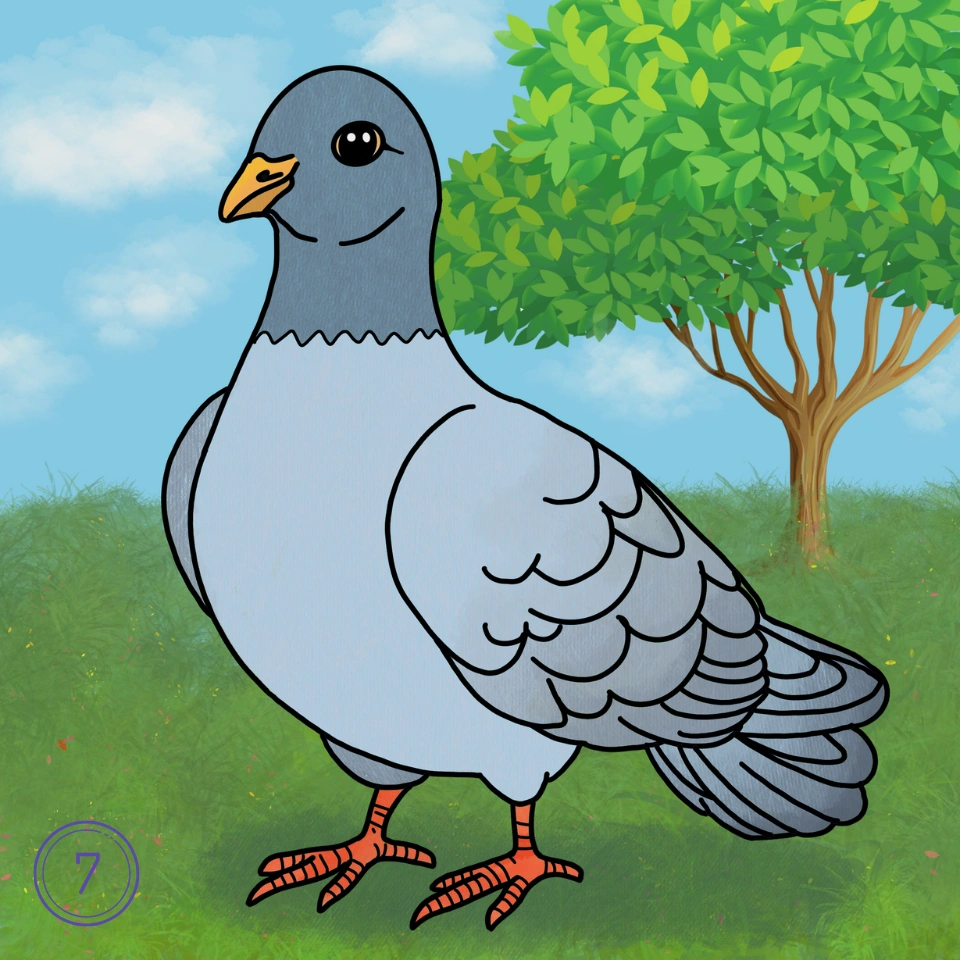
Tips for a Successful Pigeon Drawing
- Use References: A reference photo can significantly improve the detail and realism of your pigeon drawing, especially for capturing specific species.
- Experiment with Poses: Drawing pigeons in different poses, from feeding on the ground to taking flight, can offer a dynamic range of perspectives in your artwork.
- Play with Mediums: Exploring with pencils, inks, or watercolors can help you discover the best techniques to depict the softness of feathers and the gentle gradations of color.
Conclusion about How to Draw a Pigeon
Drawing a pigeon can be a rewarding artistic endeavor, offering a chance to hone your skills while paying homage to the grace of these ubiquitous city dwellers. By following these steps and incorporating the provided tips, you’ll be equipped to create pigeon drawings that are both accurate and expressive. Whether your goal is to capture the everyday charm of urban wildlife or to create a symbol of peace, remember that observation, practice, and experimentation are the keys to bringing your pigeon drawings to life.
